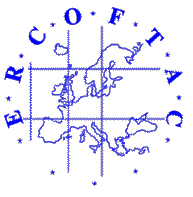 |
 |
 |
|
| Institute of Thermomechanics AS CR, v.v.i. | CTU in Prague Faculty of Mech. Engineering Dept. Tech. Mathematics | MIO Université du Sud Toulon Var - AMU - CNRS - IRD | Czech Pilot centre ERCOFTAC |
| Charge Manipulation of Flow in Nanochannels | |
| T. Prevenslik | |
Abstract: | |
| The manipulation of flow in nanochannels by charge is thought confirmed by numerous MD simulations of flow by a single file of molecules interacting with the interior of CNTs through L-J potentials. MD stands for molecular dynamics, CNT for carbon nanotubes, and L-J for Lennard-Jones. MD simulations give unusual findings: The flow can be stopped by placing a static positive charge near the outside of the CNT while a vibrating charge can increase the flow. Vibrating charge gives maximum flow at NIR frequencies suggesting the breakage of hydrogen bonds with the CNT walls. NIR stands for near infrared. However, the questionable MD model of a string of molecules suspended on hydrogen bonds has not been confirmed by experiment. A different MD model is therefore proposed. Since nanochannel cross-sections have at least one dimension < 100 nm, the molecules upon entering the nanochannel are irradiated by the EM radiation produced as QM precludes the heat from the surroundings from being conseved by raising the temperature of the nanochannel. QM stands for quantum mechanics. Instead, standing EM radiation is created across the < 1 nm dimension of the CNT having Planck energy at X-ray levels > 300 eV which is sufficient to ionize including the inside surface of the CNT wall. What this means is the hydrogen bonds do not break by the flow, but are broken by EM radiation, the electrons removed leaving a flow of positive charged atoms in the CNT with the inside surface also charged postive. EM stands for electromagnetic. Nanochannel flow is therefore significantly enhanced above classical theory because Coulomb repulsion between atoms and with the CNT wall precludes frictional contact producing a flow of positive charged atoms approaching a frictionless condition bounded by the Bernoulli equation. MD simulations are performed for a single-file flow of positive charged atoms that show water flow in CNTs can be manipulated with static and vibrational charge. | |
Keywords: | |
| nanochannel flow, charge, quantum mechanics | |
| Fulltext: PDF DOI: https://doi.org/10.14311/TPFM.2018.031 | |
| In Proceedings Topical Problems of Fluid Mechanics 2018, Prague, 2018 Edited by David Šimurda and Tomáš Bodnár, pp. 231-234ISBN 978-80-87012-65-9 (Print)ISSN 2336-5781 (Print) | |
 Login
Login Powered by
Imce 3.0 © 2014, Pavel Formánek, Institute of Thermomechanics AS CR, v.v.i. [generated: 1.5331s]
Powered by
Imce 3.0 © 2014, Pavel Formánek, Institute of Thermomechanics AS CR, v.v.i. [generated: 1.5331s]